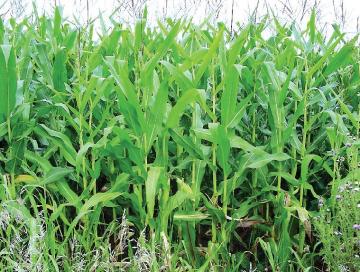
Maize (Zea mays)
Local names: Hindi: Makka Tamil: Makka cholam Telugu: Mokka Jonnalu Kannada: Makkjola
Maize is one of the most important kharif crop of Asian countries, including India. Maize is also one of the best cereal fodder crop grown during summer, rainy and/or early winter season. It requires warm and temperate climate and grows well on alluvial soils. The crop grows well in slightly acidic to neutral soils (pH 5.5-7.5). Sowing is done from the middle of March to middle of September for fodder and in July for grains in the plains and May to June in the hills. The fodder is ready between 60-70 days but for grain production it takes about 90-110 days. The yield of fodder is between 350-450 quintals/ hectare. It is a maintenance type of fodder containing 8-10% of protein like Sirsa 20, M. P. chari and S. almum but the yield of maize is generally lower than the improved varieties of sorghums. It can, however, be used as a dual purpose crop like cowpea. When the cobs in milk stage are removed the residual plant constitutes a maintenance ration. When the crop is allowed to mature, the stalk becomes very hard and is not even comparable with straw.
Nutritive value
Maize produces rich and nutritious green fodder which is a good source of carbohydrates. The green fodder is particularly suitable for silage making. It contains 8-10% protein and 60.0% total digestible nutrients. Maize grains contain trypsin inhibitor. The important varieties are African tall, JS-1006 and Vijaya composite.
